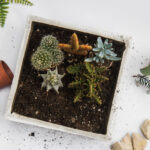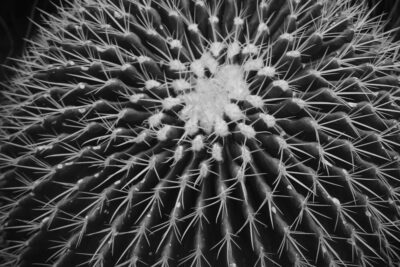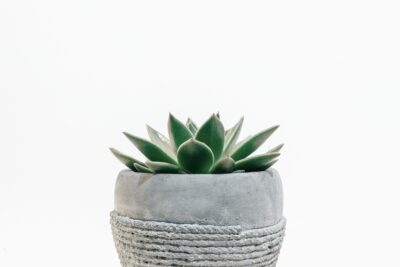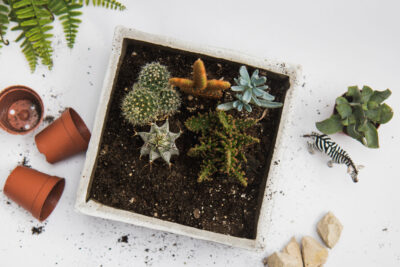
Cold Hardy Succulents: Flourishing in Chilly Climates

When we think of succulents, we often picture them thriving in warm and arid environments, basking in the sun and soaking up the heat. However, there is a fascinating group of cold-hardy succulents that have adapted to colder climates and can withstand freezing temperatures. These cold-hardy succulents are a testament to nature's resilience and ability to survive in diverse conditions.
We will explore the world of cold-hardy succulents and how they have evolved to survive in chilly climates. We will discuss some popular varieties of cold-hardy succulents, their unique characteristics, and the best practices for their care and cultivation. Additionally, we will provide tips on how to protect these resilient plants during harsh winters and offer some creative ideas for incorporating them into your garden or indoor space. Whether you live in a cold region or simply want to diversify your succulent collection, this article will provide you with all the information you need to embrace the beauty of cold-hardy succulents.
- Plant cold-hardy succulents that are adapted to colder climates
- Choose succulent varieties that can withstand freezing temperatures
- Provide adequate protection for your succulents during colder months
- Plant succulents in well-draining soil to prevent root rot in cold weather
- Provide shelter from strong winds to prevent damage to your succulents
- Water your cold-hardy succulents sparingly during winter to avoid frost damage
- Consider growing succulents in containers that can be moved indoors during extreme cold spells
- Use frost blankets or cloths to cover your succulents during frosty nights
- Mulch the soil around your succulents with a layer of organic matter to insulate the roots
- Monitor your succulents closely during winter and take prompt action if any signs of damage appear
- Frequently Asked Questions
Plant cold-hardy succulents that are adapted to colder climates
Contrary to popular belief, succulents are not just for warm and tropical climates. There are actually many varieties of succulents that are perfectly suited for chilly climates and can thrive even in colder temperatures. These cold-hardy succulents have adapted to withstand frost, snow, and even freezing temperatures, making them a great addition to gardens in colder regions.
Benefits of cold-hardy succulents
Planting cold-hardy succulents in chilly climates comes with a host of benefits. Firstly, these resilient plants can withstand harsh winter conditions without requiring much maintenance. Their ability to store water in their leaves allows them to survive during periods of drought or when the ground is frozen.
Additionally, cold-hardy succulents can add a touch of beauty to winter landscapes. Their unique shapes, textures, and colors provide a stunning contrast against the backdrop of snow and ice. Whether planted in containers or directly in the ground, they can serve as eye-catching focal points in your garden throughout the year.
Popular cold-hardy succulents for chilly climates
Now that you're ready to embrace the world of cold-hardy succulents, here are some popular varieties that will thrive in chilly climates:
 What Temperature is Too Hot for Succulents?
What Temperature is Too Hot for Succulents?- Sempervivum (Hens and Chicks): These rosette-shaped succulents are incredibly cold-tolerant and come in a wide range of colors, from green to red and even purples.
- Sedum (Stonecrop): Known for their fleshy leaves and star-shaped flowers, sedums are excellent choices for colder regions. They are available in various sizes and colors, such as Sedum spectabile 'Autumn Joy' with its pink blooms.
- Opuntia (Prickly Pear Cactus): This hardy cactus is known for its paddle-shaped pads and vibrant yellow flowers. It can withstand freezing temperatures and is a great addition to xeriscape gardens.
- Agave: With their distinct rosette shape and spiky leaves, agaves are not only cold-hardy but also drought-tolerant. They come in different sizes and colors, adding architectural interest to any garden.
Caring for cold-hardy succulents in colder climates
While cold-hardy succulents are more resilient than their tropical counterparts, they still require some care during winter months. Here are a few tips for ensuring their well-being:
- Provide well-draining soil: Succulents thrive in well-draining soil, so make sure to amend your garden beds or containers with a mix of sand, perlite, and peat moss to improve drainage.
- Protect from excessive moisture: During winter, succulents are more susceptible to rot caused by excess moisture. Avoid overwatering and ensure that the soil is allowed to dry out between waterings.
- Offer shelter from harsh elements: If your area experiences heavy snowfall or intense winds, consider providing some protection to your succulents. This can be done by using mulch, burlap, or even placing them in a more sheltered location.
- Monitor temperature fluctuations: Extreme temperature fluctuations can be detrimental to succulents. Consider covering them with a frost cloth or moving them indoors during severe cold snaps.
By choosing cold-hardy succulents and providing them with the care they need, you can create a beautiful and thriving succulent garden even in the coldest of climates.
Choose succulent varieties that can withstand freezing temperatures
When it comes to cold hardy succulents, not all varieties are created equal. If you live in a region with chilly climates or experience freezing temperatures during the winter months, it's important to select succulents that can thrive in these conditions. Fortunately, there are several cold hardy succulent varieties that are well-suited for such environments.
1. Sempervivum
Sempervivum, commonly known as "hen and chicks", is a popular choice for cold climate gardeners. These succulents are incredibly resilient and can tolerate temperatures as low as -20°F (-29°C). With their rosette-shaped leaves and vibrant colors, Sempervivum adds a unique touch to any garden or outdoor space.
2. Sedum
Sedum, also known as stonecrop, is another cold hardy succulent variety that can withstand freezing temperatures. With its fleshy leaves and clusters of star-shaped flowers, Sedum is not only visually appealing but also highly adaptable. It can survive in temperatures as low as -30°F (-34°C), making it an excellent choice for cold climate gardens.
3. Agave
Agave, a succulent native to desert areas, is surprisingly cold hardy. While most agave varieties prefer warm climates, there are some species that can tolerate freezing temperatures. Agave americana, for example, can survive temperatures as low as 0°F (-18°C) when provided with proper care and protection.
 Causes of Succulents Stretching Out and Becoming Leggy
Causes of Succulents Stretching Out and Becoming Leggy4. Opuntia
Opuntia, commonly known as prickly pear cactus, is a cold hardy succulent that thrives in arid and cold climates. This succulent is known for its distinctive paddle-shaped stems and vibrant flowers. Opuntia can endure temperatures as low as -10°F (-23°C), making it an excellent choice for gardeners in colder regions.
When selecting cold hardy succulents, it's important to consider not only their ability to withstand freezing temperatures but also their overall care requirements. While these varieties are more resilient to cold, they still require well-draining soil, adequate sunlight, and proper watering to thrive. By choosing the right cold hardy succulents for your region, you can enjoy the beauty of these plants even in the chilliest of climates.
Provide adequate protection for your succulents during colder months
Cold Hardy Succulents: Flourishing in Chilly Climates
While succulents are known for their ability to withstand harsh conditions, it's important to provide them with extra care during colder months, especially if you live in a chilly climate. Here are some tips to help your cold hardy succulents thrive:
- Choose the right location: Before the temperatures drop, make sure to identify the best location for your succulents. Look for spots that receive ample sunlight and provide some form of protection from strong winds or frost.
- Use frost cloth or burlap: When frosty nights are expected, cover your succulents with frost cloth or burlap to shield them from the cold. This will help retain heat and prevent damage caused by freezing temperatures.
- Provide proper drainage: Succulents are highly susceptible to root rot if left in standing water for too long. Ensure that your succulent containers have adequate drainage holes to prevent waterlogged soil, which can lead to frost damage.
- Apply mulch: Adding a layer of organic mulch around the base of your succulents can help insulate the soil and retain heat. This additional layer of protection will keep the roots warm and safeguard them from extreme cold.
- Water sparingly: During winter, succulents enter a dormant phase and require less water. Overwatering can lead to root rot, so it's crucial to adjust your watering schedule accordingly. Allow the soil to dry out between watering sessions to avoid any potential damage.
By following these simple guidelines, you can ensure that your cold hardy succulents thrive even in chilly climates. Remember to monitor the weather conditions and adjust your care routine accordingly, providing your succulents with the necessary protection they need to flourish.
 Can Environmental Factors Influence the Color of Succulents?
Can Environmental Factors Influence the Color of Succulents?Plant succulents in well-draining soil to prevent root rot in cold weather
Succulents are known for their ability to thrive in dry and arid climates, but did you know that there are cold-hardy varieties that can withstand chilly temperatures? If you live in an area with cold winters, you don't have to give up on growing these beautiful plants. With a few precautions, you can enjoy the beauty of succulents even in frosty conditions.
One of the most important factors to consider when growing succulents in cold climates is the type of soil you use. Succulents prefer well-draining soil that allows excess water to flow through easily. In cold weather, excess moisture in the soil can lead to root rot, which can be detrimental to the health of your plants.
To prevent root rot, it's crucial to plant your succulents in a well-draining soil mixture. You can create your own by mixing equal parts of sand, perlite, and potting soil. This combination will ensure that water doesn't get trapped around the roots, allowing them to breathe and prevent rotting.
Additionally, it's recommended to use a container with drainage holes to further facilitate the flow of excess water. This will prevent water from pooling at the bottom of the pot, which can also contribute to root rot.
Tips for planting succulents in cold climates:
- Choose cold-hardy succulent varieties that are known to tolerate freezing temperatures.
- Plant your succulents in well-draining soil to prevent root rot.
- Use containers with drainage holes to ensure excess water flows out.
- Consider providing some protection to your succulents during extreme cold snaps, such as bringing them indoors or covering them with a frost cloth.
By following these tips and providing the right conditions, you can successfully grow cold-hardy succulents in chilly climates. Experiment with different varieties and have fun creating a unique succulent garden that can withstand even the harshest of winters.
 Optimal Growing Conditions for Succulents: Sun or Shade?
Optimal Growing Conditions for Succulents: Sun or Shade?Provide shelter from strong winds to prevent damage to your succulents
One of the key factors in ensuring the survival and thriving of cold-hardy succulents in chilly climates is protecting them from strong winds. These winds can cause significant damage to the delicate leaves and stems of these plants, leading to stunted growth or even death.
To shield your succulents from strong winds, consider creating a windbreak using various techniques:
- Planting tall, sturdy shrubs or trees around your succulent garden to act as a natural barrier against the wind.
- Installing a fence or trellis made of strong materials, such as wood or metal, to create a physical barrier that blocks the wind.
- Using windbreak netting or fabric to create a temporary shield around your succulents, particularly during periods of strong winds.
Additionally, positioning your succulent garden in a location that offers some natural protection, such as against a wall or in a sheltered corner, can also help minimize the impact of strong winds.
Pro Tip: When choosing plants for your windbreak, opt for varieties that can withstand harsh weather conditions and provide adequate protection for your succulents.
Water your cold-hardy succulents sparingly during winter to avoid frost damage
During the winter months, it is crucial to adjust your watering routine for cold-hardy succulents to ensure they thrive in chilly climates. These resilient plants have adapted to withstand cold temperatures, but overwatering can still be detrimental and lead to frost damage.
When temperatures drop, the metabolism of succulents slows down, and they enter a state of dormancy. This means their water requirements decrease significantly. Overwatering can cause the roots to rot, leading to irreversible damage and even death of the plant.
 Maximum Size of Succulent Plants in Optimal Growing Conditions
Maximum Size of Succulent Plants in Optimal Growing ConditionsTo avoid frost damage and promote the health of your cold-hardy succulents during winter, it is recommended to water them sparingly. Here are some guidelines to follow:
1. Assess the moisture level
Before watering your succulents, it's important to check the moisture level of the soil. Stick your finger about an inch into the soil, and if it feels dry, it's time to water. However, if it still feels damp, hold off on watering until the soil dries out.
2. Water deeply but infrequently
When it's time to water, make sure to do it deeply but infrequently. This means thoroughly saturating the soil until water drains out from the bottom of the pot. However, allow the soil to dry completely before watering again. This helps prevent water from accumulating around the roots and causing rot.
3. Use well-draining soil
Using a well-draining soil mix is essential for cold-hardy succulents. It allows excess water to flow through the soil, preventing it from becoming waterlogged. Opt for a mix that consists of a combination of coarse sand, perlite, and well-rotted compost.
4. Protect from excessive rainfall
In regions with heavy winter rainfall, it's advisable to provide some protection to your cold-hardy succulents. Consider moving them to a covered area or using a temporary shelter to shield them from excessive moisture. This will help prevent waterlogged soil and protect the plants from frost damage.
Remember, every succulent has slightly different water requirements, so it's crucial to observe your plants closely and adjust the watering frequency accordingly. By providing the right amount of water during winter, your cold-hardy succulents will continue to flourish even in chilly climates.
Consider growing succulents in containers that can be moved indoors during extreme cold spells
 Choosing Low-Maintenance Outdoor Perennial Succulents
Choosing Low-Maintenance Outdoor Perennial SucculentsWhy Choose Cold Hardy Succulents?
Cold hardy succulents are an excellent choice for gardeners who live in regions with chilly climates. These resilient plants have adapted to withstand colder temperatures, making them the perfect addition to your outdoor garden or indoor collection. Unlike their tender counterparts, cold hardy succulents can tolerate freezing temperatures without succumbing to frost damage.
Benefits of Growing Cold Hardy Succulents
Growing cold hardy succulents offers several benefits, including:
- Year-round Beauty: Cold hardy succulents retain their vibrant colors and unique forms even during the colder months, providing visual interest to your garden throughout the year.
- Low Maintenance: Succulents, in general, are known for their minimal care requirements, and cold hardy varieties are no exception. These plants are drought-tolerant and require infrequent watering, making them an ideal choice for busy gardeners.
- Easy Propagation: Cold hardy succulents are relatively easy to propagate, allowing you to expand your collection or share them with fellow gardening enthusiasts.
- Environmental Benefits: Succulents are renowned for their ability to absorb carbon dioxide and release oxygen, improving air quality and contributing to a healthier environment.
Best Cold Hardy Succulents for Chilly Climates
Here are some popular cold hardy succulents that thrive in chilly climates:
- Sempervivum: Also known as hens and chicks, sempervivum is a classic cold hardy succulent that forms rosette-shaped clusters. They come in various colors and are highly resistant to frost.
- Sedum: Sedums are a diverse group of succulents that can endure freezing temperatures. They come in different shapes, sizes, and colors, making them a versatile choice for any garden.
- Agave: Agave plants are known for their architectural beauty and ability to withstand extreme cold. These succulents make a bold statement in any garden and are a favorite among landscape designers.
- Opuntia: Opuntia, also called prickly pear cactus, is a cold hardy succulent that produces vibrant flowers and edible fruits. They are highly adaptable and can survive in harsh climates.
By choosing cold hardy succulents, you can create a stunning garden that thrives even in chilly climates. Whether you're a seasoned succulent enthusiast or just starting out, these resilient plants are sure to bring beauty and joy to your garden year-round.
 Is Lack of Sunlight Killing My Succulent?
Is Lack of Sunlight Killing My Succulent?Use frost blankets or cloths to cover your succulents during frosty nights
When it comes to growing succulents in chilly climates, one of the most important things to keep in mind is protecting them from frost. Frost can damage the delicate leaves and stems of succulents, causing them to wilt or even die. To prevent this from happening, it's crucial to use frost blankets or cloths to cover your succulents during frosty nights.
Frost blankets or cloths act as a protective barrier, shielding your succulents from the cold temperatures. These blankets are usually made of lightweight, breathable fabric that allows air and moisture to circulate while providing insulation. They work by trapping the heat radiating from the ground and creating a microclimate around your succulents, keeping them warm and safe.
When using frost blankets or cloths, it's essential to cover your succulents in the evening before temperatures drop below freezing. Simply drape the blanket or cloth over the plants, ensuring that it reaches the ground on all sides. Use stakes or rocks to secure the edges and prevent the covering from blowing away in strong winds.
It's important to note that frost blankets or cloths should be removed during the day when temperatures rise above freezing. Leaving the covering on during the day can cause the temperature inside to rise too high, potentially harming your succulents. Remember to uncover your plants in the morning and replace the blankets or cloths in the evening as needed.
When choosing a frost blanket or cloth, opt for materials that are specifically designed for plant protection. Look for products that are breathable, lightweight, and easy to handle. Some frost blankets even come with built-in drawstrings or zippers, making it easier to secure them around your succulents.
In addition to using frost blankets or cloths, it's advisable to select cold-hardy succulent varieties that are more tolerant of low temperatures. Some popular cold-hardy succulents include Sedum spectabile, Sempervivum tectorum, and Hylotelephium telephium. These succulents are better equipped to withstand chilly climates and can handle colder temperatures without as much protection.
With proper care and protection, your cold-hardy succulents can thrive in chilly climates. By using frost blankets or cloths and choosing suitable varieties, you can enjoy the beauty of succulents even in the coldest of weather.
 Optimal Outdoor Climate for Succulents: Temperature Range Tips
Optimal Outdoor Climate for Succulents: Temperature Range TipsMulch the soil around your succulents with a layer of organic matter to insulate the roots
One of the key steps to help your cold hardy succulents thrive in chilly climates is to provide insulation for their roots. A simple and effective way to achieve this is by mulching the soil around your succulents with a layer of organic matter. This layer of mulch acts as a protective barrier, preventing the roots from experiencing extreme temperature fluctuations and frost damage.
When selecting organic matter for mulching, opt for materials such as straw, wood chips, or shredded leaves. These materials not only provide insulation but also help retain moisture in the soil, which is essential for the overall health of your succulents. Spread the mulch evenly around the base of each plant, ensuring that it covers the soil surface without touching the stems or leaves.
In addition to insulation, mulching also helps suppress weeds, which can compete with your succulents for nutrients and water. By keeping the soil weed-free, you allow your cold hardy succulents to receive the full benefits of the mulch layer, promoting their growth and resilience.
Remember to replenish the mulch layer periodically, especially after heavy rainfall or when it starts to decompose. This ensures that your succulents continue to receive the necessary insulation and moisture retention throughout the cold season.
By taking the simple step of mulching the soil around your cold hardy succulents, you provide them with the optimal conditions to flourish in chilly climates. Not only does it insulate their roots and protect them from frost damage, but it also helps suppress weeds and retain moisture in the soil. So grab your organic mulch materials and give your succulents the cozy environment they need to thrive!
Monitor your succulents closely during winter and take prompt action if any signs of damage appear
During the winter months, it's crucial to keep a close eye on your cold-hardy succulents to ensure they thrive in chilly climates. Although these hardy plants can withstand lower temperatures than other varieties, they are not completely immune to damage.
 The Ideal Amount of Sunlight for Succulent Growth: A Guide
The Ideal Amount of Sunlight for Succulent Growth: A GuideInspect for frost damage: Frost damage is a common issue that succulents face in cold weather. Keep an eye out for signs of blackened or mushy leaves, which indicate frost damage. If you notice any affected areas, promptly remove them to prevent further harm to the plant.
Provide adequate insulation: To protect your succulents from freezing temperatures, consider providing them with insulation. Surround the plants with a layer of mulch, such as straw or pine needles, to help regulate the soil temperature and prevent frost from penetrating the roots.
Adjust watering frequency: In winter, succulents enter a period of dormancy, and their watering needs change accordingly. Reduce the frequency of watering, allowing the soil to dry out completely between waterings. This helps prevent the roots from becoming waterlogged and potentially freezing.
Move potted succulents indoors: If you have potted succulents that are not cold-hardy, it's best to bring them indoors during the winter. Place them in a well-lit area where they can receive adequate sunlight. Remember to adjust their watering schedule to accommodate the lower light levels and cooler indoor temperatures.
Consider using frost cloth: For extra protection, you can cover your outdoor succulents with frost cloth during particularly cold nights. This lightweight fabric helps trap heat and provides insulation, shielding the plants from freezing temperatures.
Keep an eye on temperature fluctuations: Temperature fluctuations can be detrimental to cold-hardy succulents. Avoid placing them in areas where they may be exposed to sudden temperature changes, such as near heaters or drafty windows. Aim for a consistent and moderate temperature to ensure their well-being.
By closely monitoring your cold-hardy succulents and taking prompt action if any signs of damage appear, you can help them flourish even in chilly climates. With proper care and attention, these resilient plants can bring beauty to your garden year-round.
 Sunlight Needs of Succulent Plants: Finding the Perfect Balance
Sunlight Needs of Succulent Plants: Finding the Perfect BalanceFrequently Asked Questions
1. What are cold hardy succulents?
Cold hardy succulents are a specific type of succulent plant that are able to tolerate chilly climates and even frost without being damaged.
2. How do cold hardy succulents survive in cold weather?
Cold hardy succulents have the ability to store water in their leaves, stems, or roots, which helps protect them from freezing temperatures.
3. Can I grow cold hardy succulents indoors?
Yes, many cold hardy succulents can be grown indoors as long as they receive adequate sunlight and are not exposed to extreme temperature fluctuations.
4. What are some popular cold hardy succulent varieties?
Some popular cold hardy succulent varieties include Sempervivum (hens and chicks), Sedum (stonecrop), and Delosperma (ice plant).
If you want to read more articles similar to Cold Hardy Succulents: Flourishing in Chilly Climates, you can visit the Growing Conditions category.






You Must Read